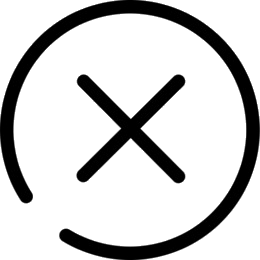 Limit of Rejection
Limit of Rejection
According to article 14 of EU-Regulation 178 of 2002 (also known as the General Food Law or GFL), the official control authorities can reject food and feed if it is "unsafe" for the consumer. To know whether food or feed is unsafe, an exposure assessment of the situation is needed. For this, risk assessors use a procedure where intake of a chemical is compared with a permissible exposure level. The intake of a chemical is calculated by using the concentration of the chemical in the food commodity of interest, in combination with data on food consumption. The result is then compared with a value that describes the maximal permissible exposure. For that a Health Based Guidance Value (HBGV) is used, such as the Acceptable Daily Intake (ADI), or the Acute Reference Dose (ARfD). For chemicals without a HBGV one can use a BMDL instead. You can read more about this topic in this portal under HBGVs and BMDLs. If the exposure exceeds the approriate HBGV or BMDL, then the food is considered "unsafe".
Based on this approach it is possible to calculate the concentration in food where the HBGV or BMDL is just exceeded. This is called the Limit of Rejection (i.e. LoR). It means that all samples with a concentration above the LoR are to be considered unsafe, and that the food and feed can be rejected by the official control authorities according to article 14. So the LoR can be used as a control value to reject contaminated food or feed. Beware however that a LoR is not to be used in the EU in cases where a MRL or ML already exists, as the MRL and ML are legal limits, whereas the LoR is not a legal standard.
To calculate the LoR, one can use the following formula that can be derived from its definition. Beware of the correct units.
The EAST tool in this portal will calculate the LoR when you are evaluating a chemical in a food commodity.
The Maximum Consumption Quantity
A similar type of entity like the LoR is the Maximum Consumption Quantity (i.e. MaCQ). This is the amount of food or feed to be ingested to exceed the HBGV, for a given concentration of the chemical.
That value can be used for a quick semi-quantitative exposure assessment. If the MaCQ is a very low value, e.g. below 1 gram, for a commonly available food commodity (e.g. staple food), then it can be assumed that exposure poses a health risk for the consumer, without knowing the actual food ingestion quantity. At the same time it can be assumed that there is no exposure risk if the MaCQ is extremely large, e.g. more than 1 kilogram. Besides the value can be used if the contamination is only found in a very limited quantity (e.g. one bottle or tin).
To calculate the MaCQ, one can use the following formula that can be derived from its definition. Beware of the correct units.
The EAST tool in this portal will calculate the MaCQ when you are evaluating a chemical in a food commodity.
